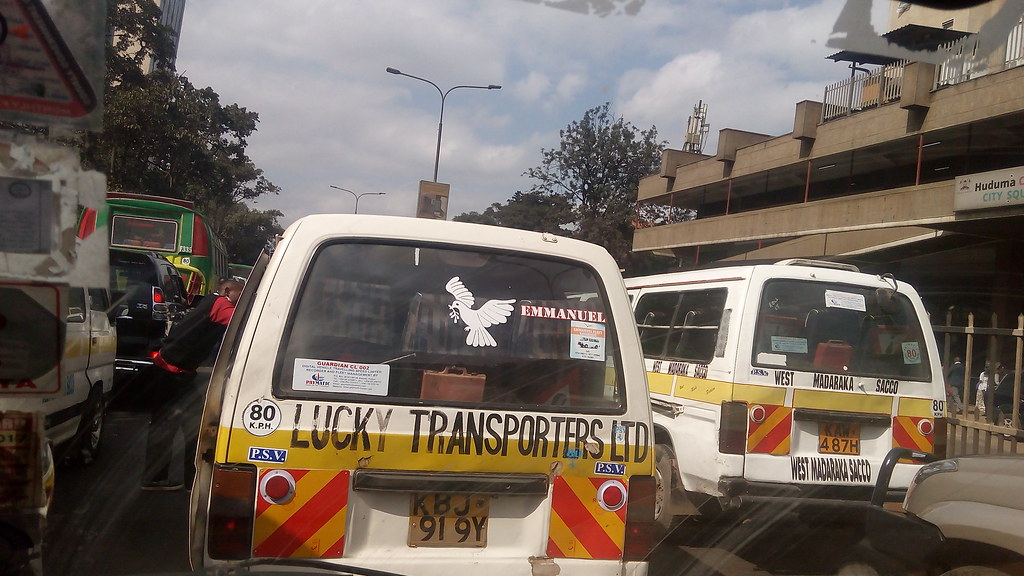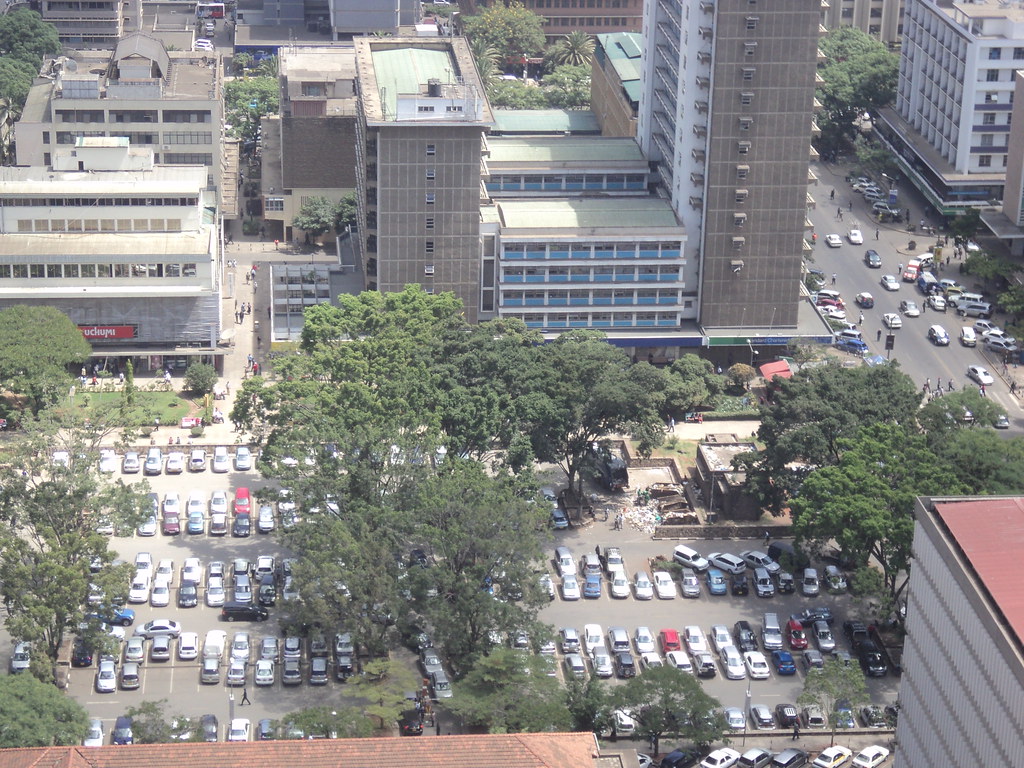The City of Nairobi is believed to experience some of the longest personal travel time periods globally. This situation applies regardless of the means used; public, private or non motorized. The result is perennial delays in public and personal schedules, time wastage in transit, human stress and occasional accidents as road users try to force their way ahead of others. Delays are not limited to specific parts of the city and are common in most built up areas. Many people have termed this as ‘congestion.’
While policy makers in the city have in the past spent a lot of their efforts on discussions focused on ‘de-congesting’ the central business district, there has been little or no talk related to the transit challenges facing the rest of the city. Although the central business district has evolved over the years with major corporates, embassies and new hotels relocating to the “first concentric zone (UpperHill, Kilimani and Westlands), the CBD remains a transit zone for those using public transport between various parts of town.
The City of Nairobi recently issued a decree aimed at ‘decongesting’ the City. The decree mainly targeted the CBD. By virtue of the order, public transport vehicles would be banned from accessing the central business district and users of public transport would be forced to traverse several kilometers to access the CBD or, alternatively, to access a connecting vehicle to another part of town.
The decree provoked a public outcry, as a consequence of which, a few days after, the City authorities postponed the implementation of the decree.
Several problems with this decree are evident. First of all, the authorities concerned failed to commence their thought process from first principles. As a result, they ended up not digging deep enough into the root of the problem. A consideration based on first principles would allow one to recognize that the main issue to be addressed is access, through mobility. Poor access and lack of mobility options or alternatives is the main root to proceed from. In addition, such access and mobility has to be centered on people.
Another misconception is that the city is ‘congested.’ A good question to ask would be whether the city is congested or simply disorganized. With a population of only 4 million people and area coverage of 696 square km, the bigger issue appears to be related to order, planning and management.
The proposed or attempted solutions once again jumped several levels ahead of the thinking process, including going directly to supply factors of transportation while ignoring demand factors. Supply factors will normally focus on how to ‘deal with’ the service provider. This has been a major problem and continues to be a stumbling block in the way we attempt to solve our public transport challenges. Supply factors focus on crew and vehicles. This fails to take into account the demand factors which are important for the existence and sustainability of the system. Demand factors include users (passengers), routing (relating to points of origin and destination) and fares. The decree of the county paid little or no attention to the latter.
The key question is why would the city aim at making life more difficult for the majority? Most people who access the CBD or move from one part of the city to another, do so using public means yet this majority are being punished under the illusion of creating efficiency. The city ought to figure out how it can transform the current paratransit system into an efficient transport system recognizing the commuter as king. The current decree does not show any respect for the existence of the commuter.
Coincidentally, there has been no mention of non motorized transportation in spite of efforts to popularize the same globally. Jeannette Sadik Khan, former head of the New York department of transport once stated that ‘Real world experiences have shown that reducing the number of lanes on carefully selected streets or closing them entirely not only provided pedestrian space and breathed new life to neighbourhoods but virtually improved traffic.’
After postponing the decree the City authorities stated that they were going to offer a number of options including building of a multi storey car park, road expansion, underpasses and a train from the airport. It is quite clear for any urbanist that the authorities have spent little time understanding the challenges of mobility and the impacts of the theory ‘you get what you build for.’ These appear to be desk-top suggestions by people who do not understand urban centres. Designing of cities for cars rather than for people is not by accident but by design the result of the instinct to talk first about highways overpasses and underpasses.
At the same time, while cities worldwide are trying to reduce the need for parking space, Nairobi is proposing to do the opposite. A few months ago, before he was elected, the current Nairobi Governor proposed the construction of a public transport parking space on a public park as a way of solving congestion. Today, cities are trying to encourage public transportation and reduce the use of private vehicles both for convenience (congestion related) and for environmental reasons. Nairobi seems to be moving in the opposite direction.
An interesting developmental comparison can be made with Mexico City where out of 251 real estate developments between 2009-2013, of the 172 million square feet constructed, 42% was dedicated to parking space. Not surprisingly, on July 11th this year, the mayor announced reforms in parking spaces allocation that changed from stating minimum parking requirements to maximum parking allocations per building, depending on the land use of the construction. This was a step in prioritizing people over vehicles.
The recent proposals also attempt to generalize the causes of congestion, suggesting general solutions without proposing alternative modal shift for each transport channel. Without keen attention to detail and the continuous shifting of the place of the commuter, these proposals are bound to fail.
How do you think Nairobi should approach its paratransit and mobility challenges? Have you been to any city that has done the same?
Images by Constant Cap, data linked to sources




Nice piece whoever I got lost by your argument that by the mayor of Mexico City announcing maximum parking requirements as opposed to minimum was a step towards prioritizing people over vehicles.
Noted, I’ll explain it shortly.
Interesting read. My thought is that services and amenities in Nairobi should not be centralised as it currently is. Offices are concentrated in Upperhill, CBD and Westlands. This leads to people flocking to these locations in the morning and becoming ghost towns in the evening (especially Upperhill). We need a situation where people live close to where they work. Case in point is Pretoria, South Africa, where residential flats are close to office buildings resulting in shorter commute times for the workers and less need to use cars to commute. I take cognisance of the fact that this is may be very difficult to implement.
Very true. Mixed land use is important to reduce travel times. Its happening slightly in Kilimani and Westlands(by default). It can be done in Upper Hill and even CBD if we wanted.
Great piece…easy to understand and very educative…
Are real estate developers required to give a master plan of how they will allocate space for amenities such as parking and pavements for pedestrians? Most new buildings are now being done up to the edge of the road. This leaves everyone else to scramble for the remaining space. I would expect NEMA, County Govt and NCA to oversee this jointly.
There is a requirement for that. What is interesting is that some cities have reduced the parking requirement in order to promote use of newly developed urban transit systems. E.g Mexico City and some parts of NYC. We would have to work on our public transit in order to consider such moves.
Very informative content, a valuable resource article!